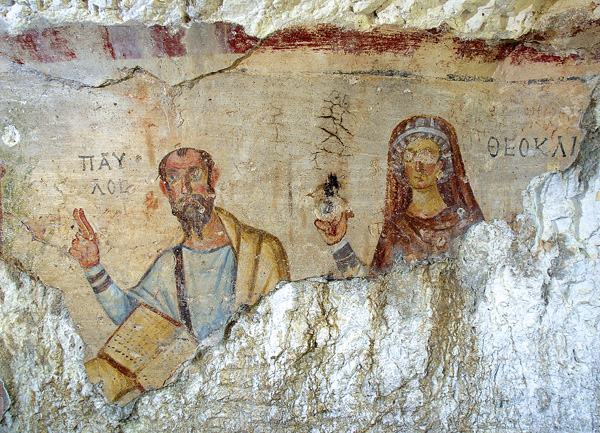Image Details

Österreichisches Archäologisches Institut, Wien/Nicolas Gail
The wicked mother Theocleia (right) holds up a reproachful finger while Paul (left) preaches his message of virginity in this fourth-century fresco on the walls of a grotto devoted to St. Paul in Ephesus, in Asia Minor. The scene most likely originally showed Thecla listening to Paul’s words, but the fresco is too badly damaged to identify any figures other than these two, whose names appear in Greek beside their portraits. At some point, an iconoclast gouged out the eyes and hand of Theocleia in the Ephesus fresco—perhaps because of her bad reputation in the stories about her daughter.
By the fourth century, Thecla’s fame had spread far and wide across the Mediterranean. The fourth-century Spanish pilgrim Egeria describes a massive shrine complex devoted to Thecla in Seleucia (modern Silifre, Turkey), whose importance has been confirmed by archaeological excavations. Tourist souvenirs from Egypt and North Africa bear Thecla’s name and image; and Thecla’s popularity continues to this day in parts of Italy and Spain.
